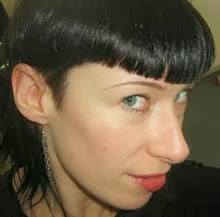

I was provoked to respond to a freind's blogpost titled "Back from vacation? don't waste a precious clear mind..." (
you can read it here)
…hmmm, well, I am in fact back from a break, but, it seems for me, a holiday is more like a lobotomy. My mind is a mere blurry quagmire of mush. I've only just realised September has slipped me by. Insane work deadlines aside, perhaps it is "the melancholy of things complete" that explains my brain slump....Damn you Wittgenstein!
Along with the regular “what day is it?” holiday mentality, I’ve found myself forgetting to pay bills, leaving my mobile phone at home (on more than one occasion), absently walking past the dry-cleaners when there’s two parcels waiting for me and returning from the supermarket with soap instead of toilet tissue!
Has my frenetic daily work routine conditioned me to function as an astutue human being? Are my two jobs, radio show and blogs now an essential part of me subsisting as a “regular schmo” in the real world? Will I ever be able to relax, take time out, switch off and have a holiday ever again – without my sensibilities and entire life falling apart in the process?
I only have one random recollection from September and that is... Remember to look up! You may enjoy some simple pleasure from the weirdness that appears when you gaze above every once in a while. This milk crate, high in a tree kept me smiling and imagining for hours. It appeared in stealth-mode, camouflaged so perfectly against the blue sky and patchy foliage.
Just remember if bills aren't paid and phones are lost there's still worse things that could happen. ...you could be struck by a kamakaze inanimate object at any time.
In a tree - in perpetuity
corner of Crown and Stanley St
Darlinghurst NSW 2010






